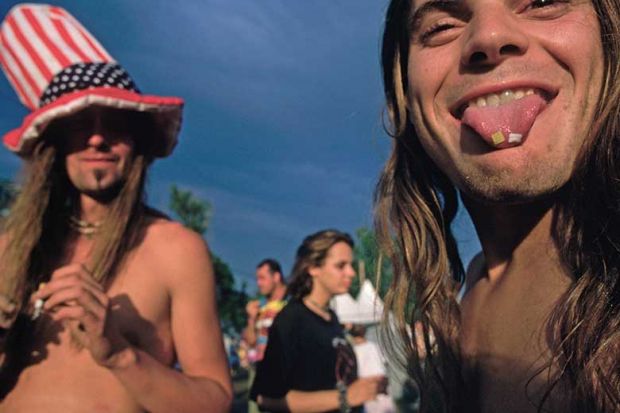Historically, the term “mysticism” has commonly been the source of misunderstanding, misuse or even abuse. This is partly because of the antiquity of the word, and the way that it has changed meaning over time, and partly because the ineffable nature of what is normally described as “mystical experience” is inherently impossible to describe – in other words, how can experience that by definition lies beyond words be captured in language?
And yet there is a vast literature of mysticism, dating back over centuries, which is not confined to the Judaeo-Christian tradition: one way or another, all human cultures have their “mystics”, visionaries who bring back to the everyday world accounts of that which is normally hidden or unseen, thereby revealing the often occluded meanings that shape our existence. The earliest accounts of Christian mystical experience, such as those given by Clement of Alexandria and his pupil Origen, are also described as “allegories” in the sense that they provide – as in the Presocratic philosophy of Heraclitus – a conduit to an occult relationship with the universe. Clement in his Stromateia (“Miscellanies”) argued that there was in mystical experience a form of “gnosis” (knowledge) that was a form of advanced Christianity. It was an axiom of the medieval church, however, that true Christian knowledge was entirely separate from this secret and heretical philosophy. Nonetheless, the pull of “mysticism” has persisted through the ages and, as Christopher Partridge explains in this book, endured into the post-Christian era, which we also sometimes call the age of modernity.
Partridge opens his book with an apposite quotation from Georges Bataille’s Inner Experience, first published in 1943, in which he describes the pursuit of mystical experience free from the external authority of God (who, for Bataille, no longer exists anyway). Bataille saw this as part of a larger project of constructing a religion without God – a project that he termed “atheology”. In his methods of meditation, he borrowed from Western and Oriental techniques (including, briefly, yoga). His aim was to “fall without falling” – to experience the void that lay on the other side of existence without collapsing into it. Interestingly enough, however, Bataille disdained the use of drugs in his mystical experiments, although they were easily available in the avant-garde circles that he frequented.
In contrast, a large part of Partridge’s argument in High Culture is that mystical experience is no less valid for being induced by drugs rather than by religion. He goes on to describe psychoactive drugs as a “technology of transcendence”, an efficient way of taking a shortcut to another world, and refrains from any moral judgement on those who use them. His scholarly interest is in the drug experience itself and how individual insights inspired by such drugs have helped to shape modern Western culture, by which he means the past 200 years.
Partridge begins in the 19th century with the Romantic taste for opium and, less commonly, hashish. He assembles a familiar cast, including Thomas De Quincey, Coleridge, Baudelaire and so on. The most significant effect of these drugs on these artists is that, in varying degrees, they turn the user’s gaze inwards. This helps to account for the “subjective turn” that characterises Romantic literature. For De Quincey in particular, the most important effect of opium was the way in which it enhanced reality rather than, as was the case with alcohol, obliterating it. Opium gave him a distance from the world and allowed him to wander through cities, cultivating a deliberate alienation. In Everton, a suburb of Liverpool, he took a dose of laudanum and spent nights gazing out at the point where the River Mersey meets the sea. “I shall be charged with mysticism,” he wrote, describing “the great town” of Liverpool “as representing the earth, with its sorrows left behind, yet not out of sight, nor wholly forgotten”. Opium “transfigured all into harmony”.
In the mid-20th century, the discovery of new and extremely powerful psychoactive substances, such as LSD, took the drug experience in every sense to a new dimension. The influence of these drugs on the culture of the “psychedelic era” is well known and well documented. Partridge strikes out into uncharted territory, however, when he starts to ask whether we can talk about “psychedelic experiences” as religious events as well as medical and cultural phenomena. There is no easy answer to this question, but it is worth taking seriously. This means overcoming the tendency to dismiss the psychedelic era and its cultural products as dated kitsch, or the purely medical approach, which regards “mystical experience” as a pathological symptom, not unlike the side-effects of any other drug, and equally irrelevant in terms of philosophy or theology.
All of which brings us back to the question of “gnosis”. Towards the end of the book, Partridge steps away from Western culture and writes about the figure of the “Shaman”, whose role in many non-Western cultures is as an “illuminated figure” who possesses mystical knowledge (gnosis) and who uses this knowledge as “medicine, either for individuals or the collective life of a community or tribe”. Usually the study of “shamanism” is the domain of anthropologists, but here Partridge is following in the footsteps of unorthodox thinkers such as Bataille or, indeed, the drug-addicted Antonin Artaud, who saw in the figure of the shaman a metaphor for how a “sick society” might heal itself. This notion finds a scientific 21st-century corollary in contemporary psychiatric circles, where long-taboo questions are again being asked about whether “psychedelic” drugs can aid therapy. Partridge reminds us that the word “psychedelic” was coined in 1956 by the British psychiatrist Humphry Osmond, who wanted a term to describe the “mind-manifesting” qualities of psychoactive drugs. More recently, and controversially, the research of eminent experts such as David Nutt seems to be heading in this direction in the fast-moving field of neuropsychopharmacology.
This book would have benefited from more science. It is, however, rich with original insights, wide-ranging and never less than fascinating. It is important, too, that this is not a polemic for the legalisation of drugs nor is it simply naive pro-drug propaganda from a hippy professor nostalgic for his stoner past. It is instead a serious and sober cultural history of drug use in Western culture with the over-arching theme that although we may not believe in God any more, there is something fundamental in our humanity that craves transcendence and finds it in all forms of mystical experience, including the use of drugs. This craving, Partridge says, is indeed a defining part of what makes us most human.
High Culture is therefore to be highly recommended to students and scholars alike. This is partly because it genuinely breaks new ground, but also because it is the only book I have ever read that includes Mircea Eliade, Guy Debord and Bobby Gillespie, the singer with the rock group Primal Scream, in its frame of reference.
Andrew Hussey is professor of cultural history in the School of Advanced Study, University of London. He is currently writing a biography of the lettriste Isidore Isou.
High Culture: Drugs, Mysticism, and the Pursuit of Transcendence in the Modern World
By Christopher Partridge
Oxford University Press, 472pp, £22.99
ISBN 9780190459116
Published 12 July 2018
The author
Christopher Partridge, professor of religious studies at Lancaster University, was born in Wigan, grew up in Lancashire and studied divinity at the University of Aberdeen. During his time there (and particularly while working on a PhD about the philosophical theologian H. H. Farmer), he recalls, he “gradually became less interested in the formal theologies of institutional religions and more interested in everyday beliefs and experiences”.
This led him to both “a suspicion of orthodoxies” and “an appreciation of dissent”, and so into cultural studies and “an interest in those on the margins whose beliefs are typically dismissed as superficial, irrational and profane. What I discovered was that many of these beliefs, such as the belief in ghosts and UFOs, are far from marginal.”
This interest in “rejected discourses, from occult and mystical currents to the ideas disseminated in popular culture”, eventually spurred Partridge to undertake a second PhD on how “popular music informs religious and political ideas” at the University of Liverpool’s Institute of Popular Music.
While recognising “the force of the arguments for widespread secularisation…where modernisation seems to be highly corrosive of religious belief”, Partridge believes that this has been accompanied by “a widespread and vibrant interest in the paranormal, the pursuit of experiences of transcendence and the development of inner-life spirituality”. In this context, he has long been fascinated by “the experiences of those who use psychoactive substances. While there have always been ‘high cultures’, and while there is a fairly long list of influential thinkers who have been inspired by drug-induced altered states of consciousness (including Coleridge, Humphry Davy, W. B. Yeats, William James, Walter Benjamin and Aldous Huxley), since the 1960s drugs have been used increasingly as ‘technologies of transcendence’ in the search for meaning.”
Matthew Reisz
POSTSCRIPT:
Print headline: Gateway drugs...to the other side
Register to continue
Why register?
- Registration is free and only takes a moment
- Once registered, you can read 3 articles a month
- Sign up for our newsletter
Subscribe
Or subscribe for unlimited access to:
- Unlimited access to news, views, insights & reviews
- Digital editions
- Digital access to THE’s university and college rankings analysis
Already registered or a current subscriber? Login










